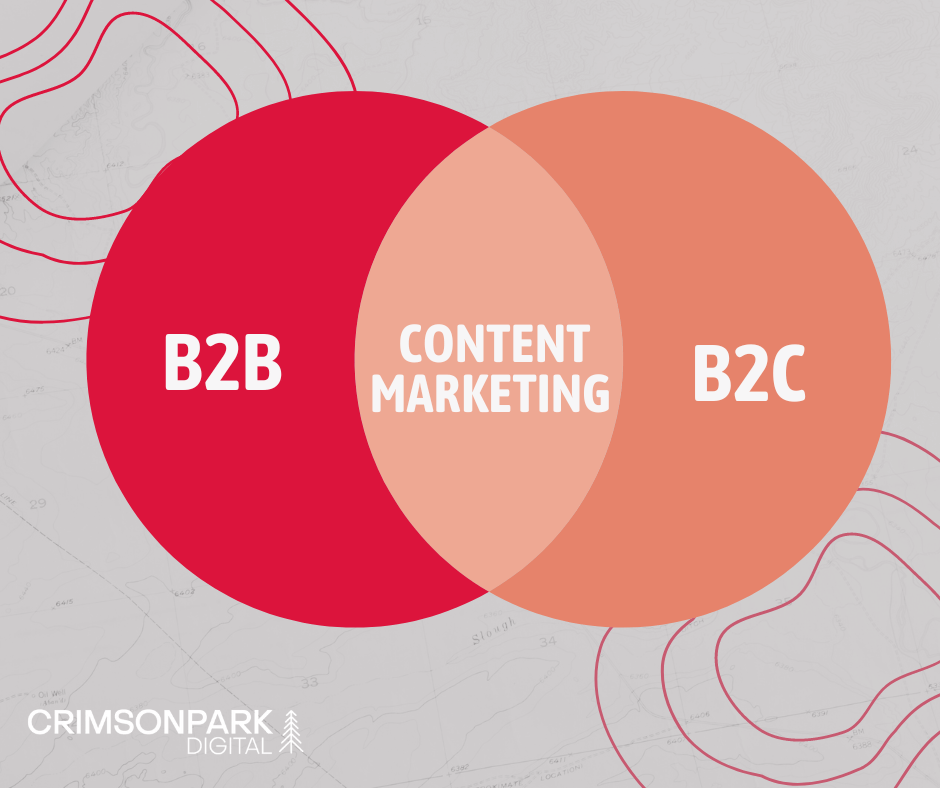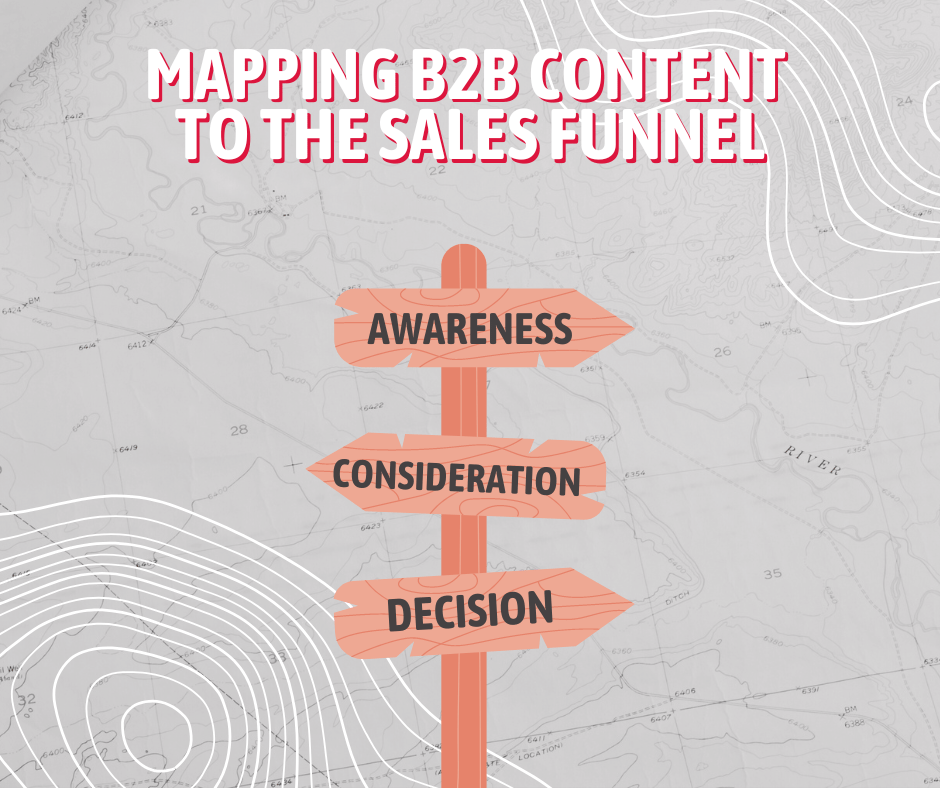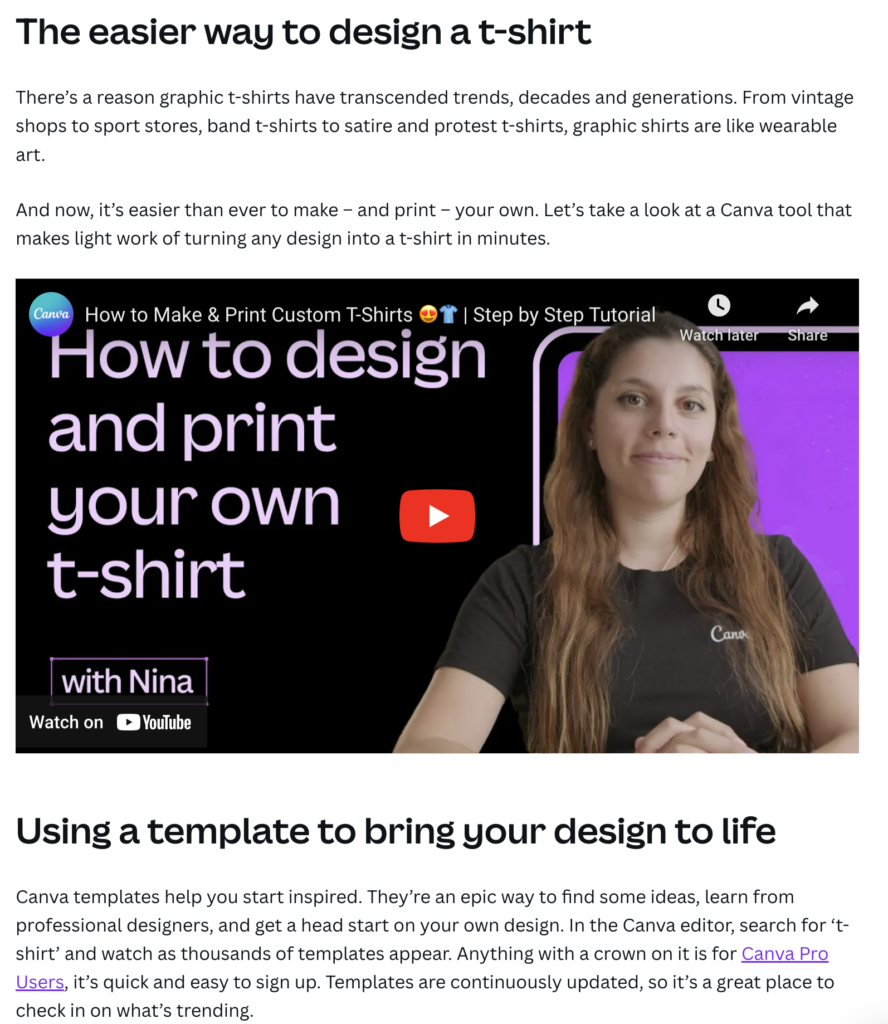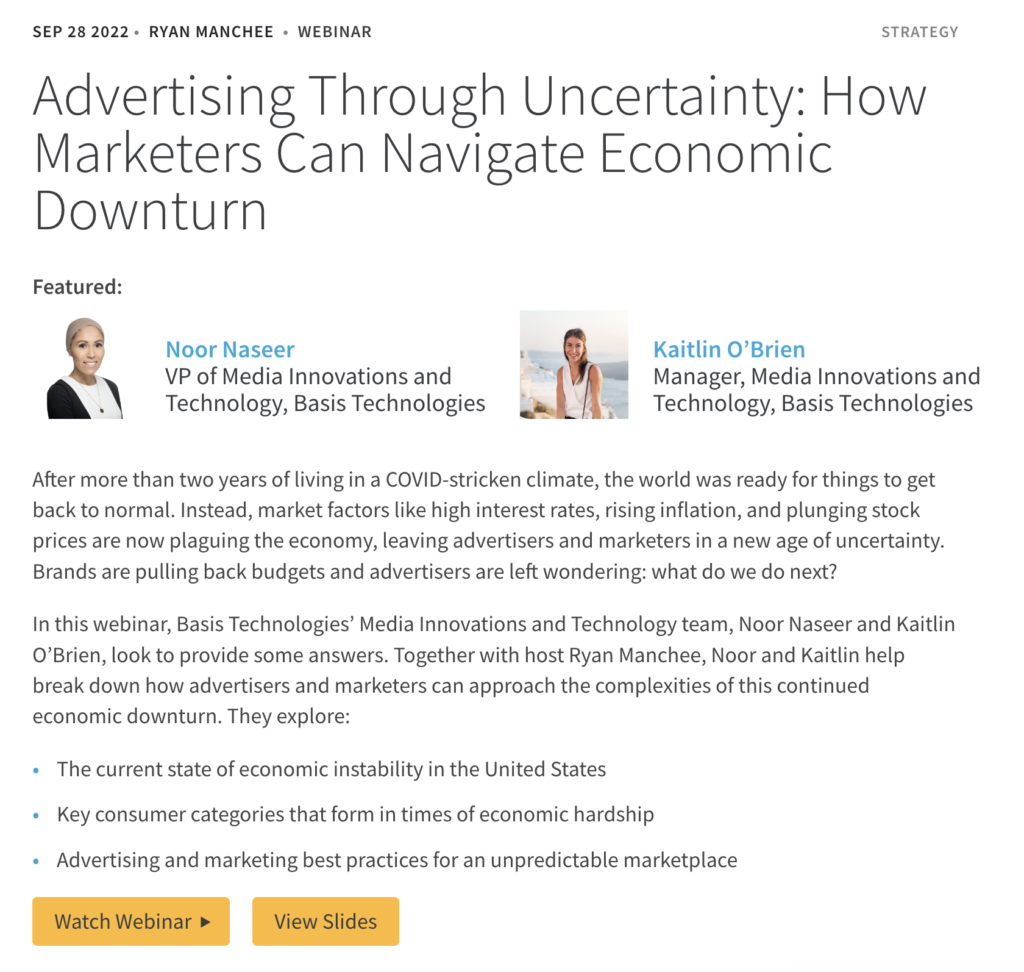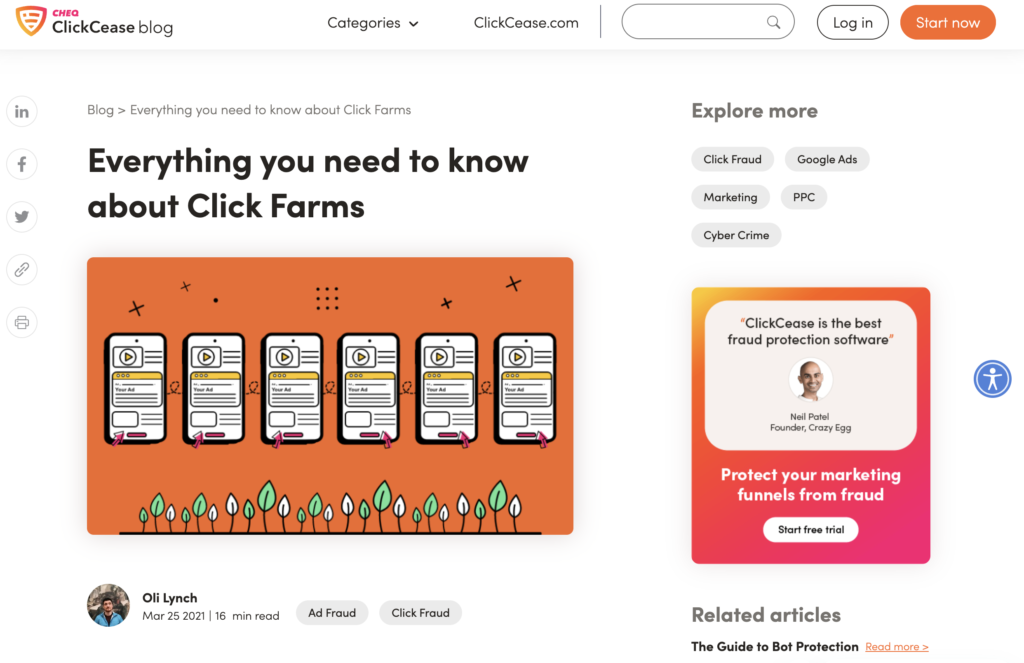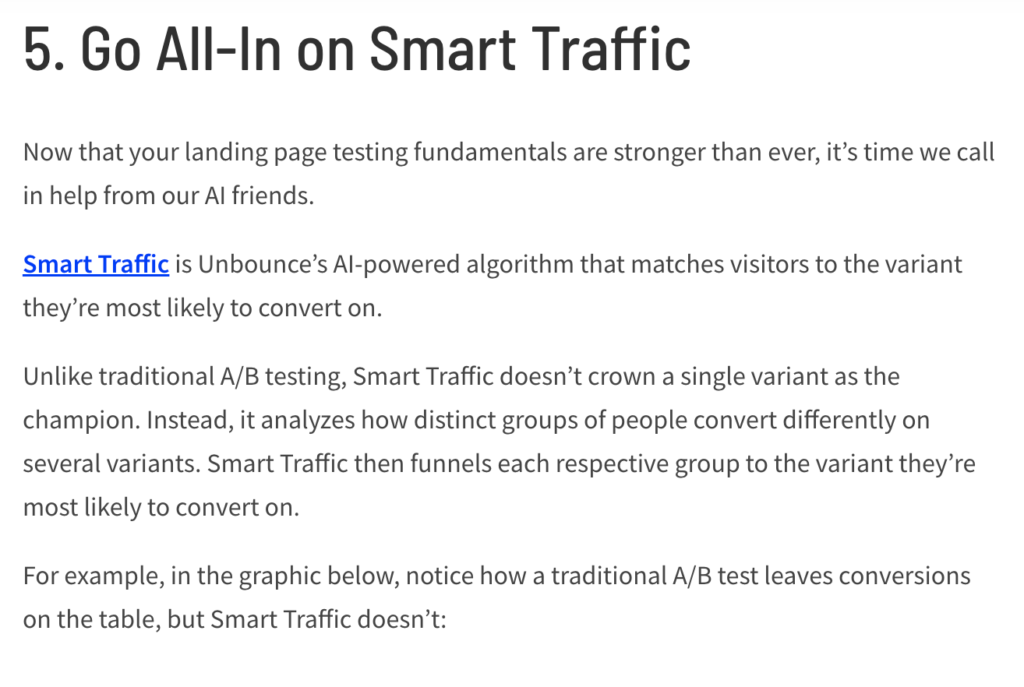5 Steps to a Successful B2B Content Marketing Strategy
In the past, it was thought that content marketing belonged to consumers. We’re happy to report that the marketing realm has seen a significant jump in B2B brands’ budgets in 2022, and with a strategic content marketing plan, these types of brands can expect their content to convert.
In this article, we share everything you need to know about content marketing for B2B companies and provide examples of each effective type.
What is a B2B Content Marketing Strategy?
A B2B (business-to-business) content marketing strategy is a plan that focuses on creating and distributing valuable, relevant, and informative content to attract and engage other businesses as potential customers or partners.
Why is a B2B Content Marketing Strategy Important?
A B2B content marketing strategy is important because it helps businesses build trust, establish authority in their industry, generate leads, and ultimately drive sales and business growth through valuable and targeted content.
The Difference Between B2C and B2B Content Marketing Strategy
Business-to-business (or B2B) content marketing includes all the pieces of writing, audio, video, or other content a company uses to promote its products or services to other businesses. B2B differs from B2C (business to consumer) marketing, in which a company promotes its products or services directly to consumers.
B2B and B2C marketing strategies require different techniques to reach their target audiences. When the audience is composed of consumers, desire and emotion should be used to capture their motivation to make a purchase. With businesses, data and logic should be deployed.
The sales cycle with B2B marketing tends to be longer than that of B2C marketing, which can often be instantaneous or impulsive. Because of the longer sales cycle and additional marketing touchpoints needed, a B2B marketing strategy can be more costly than a B2C strategy.
But don’t be dismayed. Follow along for our 5 steps to create B2B content marketing strategies that will help you feel like a pro–regardless of your target audience.
B2B Content Marketing Best Practices
The following are data-backed best practices for B2B content marketing:
1. Research Target Audience
To make your content effective, it’s vital to know your target audience well.
In B2B content marketing, your target audience consists of businesses that might want to buy what you offer, especially the key decision-makers in those companies.
For example, if you sell project management software, focus your content on businesses aiming to improve project management. This means understanding the needs of project managers, IT directors, and executives in those companies who decide on purchases.
2. Audit Existing Content
Enhancing existing content before creating new material is beneficial because it is often a faster and simpler process than starting a new project.
Existing content that is low quality can negatively impact your brand’s image and adversely affect your website’s performance on the Search Engine Results Page (SERP).
We recommend using Google Search Console Google Analytics to understand which pieces of content are performing well and which need some TLC.
3. Capture Customers At All Stages of Their Buying Journey
B2B buyer’s journeys can be especially complex because the decision often has to pass by multiple stakeholders before a purchase is made.
Understanding the marketing funnel will help B2B companies create content that captures potential customers at all stages of discovery.
The three parts of the content marketing funnel are:
- Top of the funnel: When people become aware of a need
- Middle of the funnel: Customers are considering options that will provide a solution to their need
- Bottom of the funnel: Customers pick a solution and convert with their chosen company.
How to Create a B2B Marketing Plan in 5 Steps
Step 1: Get to Know Your Brand and Its Content Goals
It may sound silly because your brand is something you probably feel pretty familiar with already. But, when it comes to creating successful content that leads to conversions, you need to understand your brand from an outside perspective. You also need clear and measurable goals and competitive analysis of the kind of content already published in your industry.
Know Your Brand
In this era, it’s necessary to understand both how your product or service works and precisely how it can solve the problem of another business. You must be able to demonstrate how your brand brings value to a customer, or they won’t give it a second glance. This is the time to clearly define your brand’s voice, tone of messaging, and any other features that may drive a business to want to use what you’re offering.
Set Content Goals
Setting goals is an essential step in content marketing development. Goals should be specific, measurable, attainable, realistic, and time-bound.
In B2B marketing, some examples include:
- Drive 10,000 new users to the website between July-September, 2022
- Increase Google organic ranking for a specific keyword by the end of Q3
- Generate 20 new leads per month from content marketing efforts
Conduct Competitor Content Research
Setting goals can be made easier if you look at what your competitors and other aspirational companies in your sector are already doing. Take a look at the current auction insights, data, and trends that you have available, and use that information to guide your brand’s goals.
Step 2: Nail Down Your Content Audience(s)
To develop content that will lead to conversions, it’s important to understand who this content will be reaching and what action you want to inspire. Your target audience should be clearly defined–perhaps so clearly defined that you give them a name. This is called a buyer persona.
Buyer Personas for B2B Marketing
A buyer or character persona is a picture of the ideal customer for your business. This customer has a personality, as well as demographics such as age and occupation, goals, and needs. Even though the customer in a B2B marketing funnel is technically another business, there is still a person or a team of people who will receive content before making a purchase decision on behalf of the company.
You may find that your brand offers solutions for companies with multiple kinds of needs, and in that case, we recommend making as many buyer personas as you see fit. Your content marketing strategy should vary from persona to persona but still have the same value proposition for cohesiveness.
Step 3: Map B2B Content to the Sales Funnel
Having an intimate knowledge of the buyer’s journey will add an extra layer to your buyer personas. Content should align with the issues a customer is hoping to address at each stage of the sales funnel: awareness, consideration, and decision. Remember, a good B2B content marketing strategy addresses a customer’s needs at each stage of the buyer’s journey, to help nurture them through the sales funnel.
Awareness: Top of the Funnel
This is the first opportunity you have to capture a buyer with your content. At this stage, a prospective buyer is looking for information that will help them better articulate their problem. Awareness content should focus on the buyer’s pain points rather than your product or brand. Education is key at this stage! Examples include informative blogs, ebooks, white papers, infographics, and guides.
Consideration: Middle of the Funnel
At this stage, the buyer has a better understanding of their problem and is now ready to find available solutions. Consideration content should focus on specific solutions that can make the buyer’s job easier or solve their problem. Examples include comparison blogs, webinars, and product feature videos.
Decision: Bottom of the Funnel
Once the buyer has decided which approach they want to take to solve their problem, they will move on to compiling a list of their solution provider options. This is where content that is brand-specific and focuses directly on the benefits your company’s product or service provides can lead to a purchase decision. Examples might be case studies, testimonials, and free trials.
Step 4: B2B Content Development
Once you know who you are selling to, why they are in need, and where they are seeking the information, it’s time to start developing the what of content marketing: the content!
Pick a Few Core Channels and Content Types
For each content distribution channel, create an organized implementation plan with content types. SEO will most likely take up a large portion of your B2B content marketing strategy. Other content types may include videos, podcasts, and social media posts.
The secret sauce of content marketing is creating pieces that can be cross-distributed.
An infographic may be great to share on your brand’s LinkedIn, and blog content can both be repurposed in an e-newsletter and used as an inbound marketing link.
Creating a consistent posting schedule based on the channels and content types you choose to use will make content development a breeze.
Maximize Organic Traffic
In other words, get ready for a deep dive into Search Engine Optimization (SEO). When it comes to the modern consumer, the first step in a purchase decision is usually a Google search. This trend applies to B2B audiences, too.
Keyword research will help you understand what information your audience is looking for. Use what you find from keyword research to help build the content you publish on your website. For best results, top-performing keywords should be implanted into blog posts, metadata, headlines, taglines, and product pages.
Step 5: Measure the ROI
We would be lost without data. It helps us understand what’s working, what’s not working, and how to plan for future marketing campaigns. Your team should be evaluating the results of content marketing campaigns based on the goals and timelines you set at the beginning, including but not limited to these metrics:
- Total leads (these can be email subscribers, free trial sign-ups, purchases, form fills, etc.)
- Total impressions (from Google Search Console and in each channel content is distributed from)
- Traffic fluctuations based on when content was published
- Social media engagements and shares
- Changes in Bounce rate
Additionally, analyze pieces of content compared to each other. Do this by taking note of blog posts with the most sessions or views, comparing web pages by their average time on page by a user, and by tracking results with UTM codes.
Report, analyze, and adjust your strategy to maximize future content marketing success.
7 Real-World Examples of B2B Content Marketing
Content marketing techniques can be broken down by the kind of content asset (blogs, webinars, etc.), the channels it is distributed on (email, website, social media, etc.), and also the subject matter category.
We compiled 7 common categories of content subject matter and exceptional examples of each in action, from B2B companies we trust.
B2B Content Type #1: The Game-Changing Tool
What it is: The game-changing tool is a piece of content with the “secret sauce.” Examples include “the secret executives use to organize their projects” or “how to simplify your business’ budget [downloadable guide].” Game-changing tools are effective forms of content marketing when they link directly to what your business sells or the services they offer.
CONTENT EXAMPLE
Company: Canva
Content type: Blog and video/how-to guide
Hook: Use our product to do this
Canva is a free online graphic design tool that is easy to use for design beginners and professionals. Canva’s resource center is filled with how-to content that ultimately hooks back to Canva products. The answer to how to do X is always by using Canva! This company is especially skilled at looping in ways their paid “Pro” version is useful for completing the tasks outlined in guides.
In the “How to make a t-shirt with Canva Smartmockup“ content piece, Canva introduces the subject with this lead-in: The easier way to design a t-shirt. For businesses without clothing personalization knowledge, this offers an appealing solution.
The blog outlines how to use the product to design a t-shirt and presents an even more appealing solution: pre-designed templates. Of course, there are more templates available for use with Canva Pro. And if you’re a company looking to distribute branded products with ease, you might be inclined to upgrade.
B2B Content Type #2: Breaking News
What it is: Sharing current events and news updates that are relevant to your business should be a main pillar in your B2B content marketing strategy. Discussing happenings that are top-of-mind for your target audience gives you credibility as a company and authority as a subject matter expert.
CONTENT EXAMPLE
Company: Basis Technologies
Content type: Webinar
Hook: This is the state of affairs, how it affects our industry, and how our product will help your business thrive during this time.
Basis Technologies provides software that simplifies and automates programmatic advertising. In a webinar titled “Advertising through uncertainty: how marketers can navigate economic downturn,” high-level Basis Media Innovations and Technology team members broke down how advertising can be approached during uncertain times.
One of the biggest takeaways from the webinar is encouraging brands to “plan to automate” their advertising techniques. This tactic resulted in 77% of study respondents moving from planning to action faster. This result came from a survey conducted by Basis, a company with a main selling factor of automation.
Webinars require a lot of resources to plan and conduct, but they work because their marketing value is unmatched. The evergreen content that is shared in webinars can be redistributed through other marketing channels. Receiving event sign-ups earns businesses new contacts that could develop into paying customers down the road.
B2B Content Type #3: Case Studies
What it is: Case studies allow B2B companies to demonstrate how their product or services have worked to create measurable results. Case studies can be results-driven or data-driven or have a combination of both qualities. They should allow other companies to visualize the results they could achieve themselves if they were to work with the distributor of this type of content.
CONTENT EXAMPLE
Company: Sprout Social
Content type: Case study
Hook: How our product helped another business succeed.
In a case study that reviewed the success Rover experienced while using the Sprout Social platform, the social media scheduling company demonstrates its value. Rover is an application that allows people to find pet sitters, but this case study is relevant to any company with a global presence and especially those with an application.
In the case study, Sprout Social explains how Rover measured and optimized performance on a global scale by using specific Sprout products and tools. The piece includes both customer testimonials and descriptions of how certain tools can be used for this type of business. This example is more anecdotal than data-driven, but it still demonstrates value by providing a real-world example of a positive experience with the program.
B2B Content Type #4: Coined Term Piece
What it is: “Coined term” refers to the creation of a phrase or word that describes something specific to your industry and that your business directly relates to. The goal of developing a coined term is to begin a conversation using the term that ultimately leads customers back to where it originated: in your company’s content marketing piece.
CONTENT EXAMPLE
Company: ClickCease
Content type: Blog
Hook: This is what a coined term means and how our product is related to it.
ClickCease is an ad fraud and click fraud detection and protection service software that prevents fraudulent activity in digital ad campaigns. This company services businesses that want to cut down on costs from pay-per-click activity from fake users and fraudulent IP addresses.
In a blog titled “Everything you need to know about Click Farms,” ClickCease introduces the phrase click farm – a location that generates internet traffic in bulk. The company explains that click farms are not necessarily illegal, but their actions are frowned upon and lead to incomplete or irrelevant data for advertisers.
According to the content piece, the key to avoiding illegitimate data from click farms and saving money on CPC is to sign up for a free trial of ClickCease.
B2B Content Type #5: The ‘Hot Take’ Piece
What it is: The hot take piece presents a stance on a subject or situation that might be controversial. The appeal of declaring something less mainstream in content is that it often inspires conversation, regardless of how it is received, which leads to high engagement.
CONTENT EXAMPLE
Company: Hotjar
Content type: Blog
Hook: Here’s our controversial stance on this thing related to our industry.
Work from home (WFH), “quiet quitting,” and remote productivity are hot topics of discussion these days. Hotjar is a website user experience insight tool with a fully remote staff located all over the world.
In a recent blog, Hotjar declared that work time is more than just laptop time; time spent thinking and reflecting is just as legitimate a form of work as time spent in meetings or on email. In a world that frequently debates the productivity of remote workers, it’s a big deal for a fully remote company to take this stance.
Taking this stance may not lead brands to purchase a Hotjar product, but it may encourage conversation in the comments when it’s shared on social media, increasing brand awareness. Additionally, it demonstrates a flexible stance held by the company, which may encourage talent to apply for open positions if they align with that stance.
This banner on the blog functions as a subtle CTA for prospective job applicants.
B2B Content Type #6: Thought-Leadership
What it is: Thought leadership demonstrates authority in an industry or on a subject that is trustworthy and engaging. Thought leadership can be used in many different formats of content but is especially useful when presented in a resource center.
CONTENT EXAMPLE
Company: Semrush
Content type: Learning center
Hook: Take our courses, which demonstrate how to do industry-specific tasks using our product.
Semrush is a content marketing and SEO research tool that allows brands to perform competitor analysis and discover ways to improve their search engine results positions.
The Semrush Academy offers free courses to anyone on the topics of SEO, content marketing, social media, sales, and PPC advertising. Each course ends with an exam that, when passed, earns the user a branded certificate.
The courses all utilize the Semrush software at some point, which requires a paid subscription (after the free trial) to use. The Academy is no doubt an intensive undertaking to create and update, but it is worthwhile when it directly results in new customers for the company.
B2B Content Type #7: Industry-Relevant and Interesting Lists
What it is: Listicles. We know them, we love them. Since the dawn of Buzzfeed in 2006, articles positioned as must-know lists of things have dominated content marketing. And in B2B content marketing, listicles are just as relevant. The key is that one of the items on the list ties back to your business.
CONTENT EXAMPLE
Company: Unbounce
Content type: Blog/Listicle
Hook: One of the ways to do this thing is by utilizing our B2B services.
Unbounce is an artificial intelligence-powered landing page builder that allows users to create high-performing marketing campaigns with ease. Unbounce routes website visitors to the best landing page for them based on their user data and demographics.
Building and optimizing landing pages can be a confusing process for someone new to marketing or a company that is just starting out. Unbounce recognizes the pain points businesses experience when creating their web presence and creates content that can help get people started.
In You’re Doing Landing Page Testing Wrong: These are the 5 Rules to Do it Right, Unbounce provides an overview of landing page testing and best practices for implementing it. Step 5 recommends using the Unbounce AI algorithm to match visitors to the landing page variant they’re most likely to convert on, a clear reason to sign up for a free trial.
This listicle is relevant, engaging, and highly shareable–all qualities that content marketing pieces should seek to achieve. And though the lead is buried at the end, business owners might walk away from this article thinking, “I should be using Unbounce.”
Partnering on Your B2B Content Marketing
Whether your company is just beginning to lay the foundations of branded content or it already has an extensive resource library, our agency can help develop your B2B content strategy.
We pride ourselves on our ability to develop B2B content marketing campaigns that convert. We use an SEO-first approach, and prioritize content topics that will give your website value and output. When we work with your brand, we will customize a content strategy that fits your business model, industry, and sales goals. Book a discovery call to get started!
Frequently Asked Questions
What is a B2B content marketing strategy?
B2B content marketing strategies encompass all the content ideation, creation, distribution, and conversion tracking related to content from brands that target other brands for their sales.
What is the difference between B2B and B2C content?
Business-to-business (B2B) content speaks to a different audience than that of business-to-consumer (B2C) content. B2B companies earn conversions from other businesses through content marketing efforts, whereas B2C companies use content to speak to an individual.
How do you get sales from both consumers and other businesses?
Some companies might be both B2B and B2C. For example, a new startup selling a digital tool might have an enterprise package for a full company to subscribe to and also sell individual licenses. A mix of both B2B and B2C content marketing would benefit brands of this nature.
What are the most common B2B content marketing examples?
Infographics, videos, podcasts, and SEO are the types of content most commonly used by B2B companies.
What are some of the main characteristics of B2B content marketing?
The use of logically presented information and data sets B2B apart from B2C content marketing.
Does content marketing work with B2B?
Yes, content marketing can increase touchpoints in the sales cycle for B2B companies - leading to an increase in awareness and sales.
